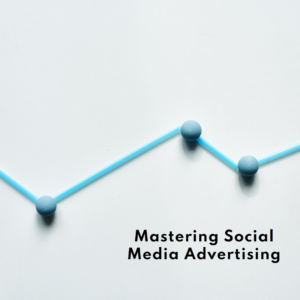Introduction:
Social media advertising has become an indispensable tool for businesses seeking to expand their reach, drive engagement, and generate conversions in the digital landscape. With its unparalleled targeting capabilities, diverse ad formats, and robust analytics, social media advertising offers businesses unparalleled opportunities to connect with their target audience and achieve their marketing objectives. In this guide, we’ll explore effective strategies for harnessing the power of social media advertising, empowering businesses to optimize their campaigns, maximize ROI, and achieve tangible results in the competitive world of digital marketing.

1. Define Clear Objectives and Target Audience:
Before launching a social media advertising campaign, it’s crucial to define clear objectives and identify your target audience. Whether your goal is to increase brand awareness, drive website traffic, or generate leads and sales, align your advertising objectives with your broader marketing strategy. Define your target audience based on demographics, interests, behaviors, and psychographics to ensure that your ads reach the right people with the right message at the right time.
2. Choose the Right Platforms and Ad Formats:
Selecting the right social media platforms and ad formats is essential for the success of your advertising campaigns. Consider the unique characteristics and audience demographics of each platform, such as Facebook, Instagram, Twitter, LinkedIn, and Pinterest, and choose the platforms that align with your target audience and marketing objectives. Experiment with different ad formats, including image ads, video ads, carousel ads, and sponsored content, to determine which formats resonate most effectively with your audience and drive the desired outcomes.
3. Craft Compelling Ad Creative and Messaging:
Create compelling ad creative and messaging that captivates your audience’s attention and inspires action. Use high-quality visuals, eye-catching headlines, and persuasive copy to convey your brand message and value proposition effectively. Tailor your ad creative to resonate with your target audience’s preferences, interests, and pain points, and experiment with different messaging angles and calls-to-action to optimize performance and engagement.
4. Leverage Advanced Targeting and Audience Segmentation:
Harness the advanced targeting capabilities of social media advertising platforms to reach specific audience segments with precision and relevance. Utilize demographic targeting, interest targeting, behavioral targeting, and custom audience segmentation to tailor your ads to the unique characteristics and preferences of your audience. Leverage retargeting and lookalike audience modeling to re-engage past visitors and expand your reach to new prospects with similar attributes and behaviors.
5. Optimize Ad Placement, Timing, and Frequency:
Optimize your ad placement, timing, and frequency to maximize visibility and engagement while minimizing ad fatigue and oversaturation. Experiment with different placement options, such as in-feed ads, stories ads, and sponsored content, to identify the most effective channels for reaching your target audience. Test different ad schedules and delivery times to determine the optimal times of day and days of the week for displaying your ads, and adjust your frequency capping settings to avoid overwhelming users with excessive ad impressions.
6. Monitor Performance and Iterate:
Monitor the performance of your social media advertising campaigns in real-time and track key metrics such as impressions, clicks, conversions, and return on ad spend (ROAS). Use analytics tools provided by social media platforms, such as Facebook Ads Manager, Twitter Ads, and LinkedIn Campaign Manager, to gain insights into campaign performance and audience engagement. Identify trends, patterns, and areas for improvement, and iterate your ad creative, targeting, and messaging based on data-driven insights to optimize performance and drive continuous improvement.
7. Test and Experiment with Different Strategies:
Embrace a culture of testing and experimentation to uncover new insights and opportunities for optimization in your social media advertising efforts. Test different ad creative variations, audience targeting parameters, ad formats, and bidding strategies to identify winning combinations that drive the best results. Implement A/B testing and multivariate testing methodologies to systematically compare and evaluate different variables and refine your approach based on empirical evidence and statistical significance.
Conclusion:
Social media advertising offers businesses unprecedented opportunities to connect with their target audience, drive engagement, and achieve their marketing objectives in the digital age. By defining clear objectives, choosing the right platforms and ad formats, crafting compelling ad creative and messaging, leveraging advanced targeting and audience segmentation, optimizing ad placement, timing, and frequency, monitoring performance, and iterating based on data-driven insights, businesses can maximize the effectiveness and ROI of their social media advertising campaigns.
As you implement these strategies, remember to stay agile, adaptive, and customer-centric, continuously refining your approach based on evolving trends, audience preferences, and performance metrics. By mastering the art of social media advertising, businesses can unlock new opportunities for growth, differentiation, and success in the dynamic landscape of digital marketing.



